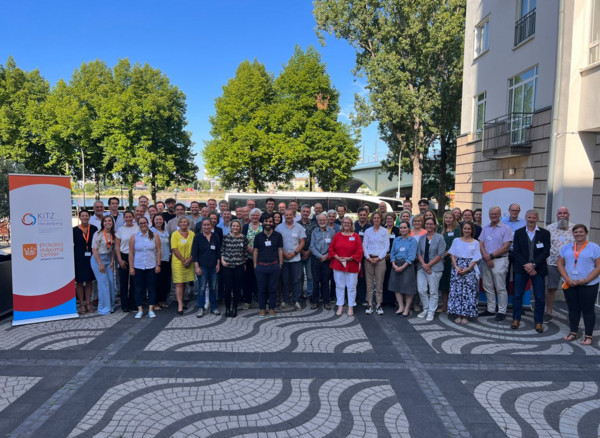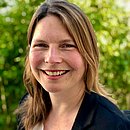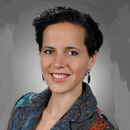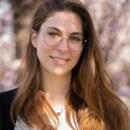Childhood cancer is relatively rare. That’s why international collaboration in research is essential: more data from more children means better and faster developments in research. That was the thought behind a so-called ‘Twinning Program’ between the Prinses Máxima Center and research centers in Heidelberg, to work together towards even better treatment options for children with cancer.
After an online meeting in honor of the official collaboration, this is the first time that the researchers from the Prinses Máxima Center, the Hopp-Kindertumorzentrum Heidelberg (KiTZ), the Deutsches Krebsforschungszentrum (DKFZ) and the Universitätsklinikum Heidelberg (UKHD) are all meeting in person. In the first phase, ideas were exchanged and preparations were made for the necessary joint research infrastructure. The projects within the collaboration are supported by the Prinses Máxima Center Foundation and the foundations of the German centers.
Strengthening each other
Group leader Roland Kuiper is involved in a collaboration looking at genetic predisposition to childhood cancer. Both centers are already doing a lot of research in this area. “It was especially important to see where we can really strengthen each other,” says Kuiper. “We soon arrived at topics that require large patient numbers, making it particularly valuable to analyze the data of children from both centers together. By definition this is the ‘high-hanging fruit’ – these are issues that keep cropping up within our research field, but that have not yet been solved. So we set the bar high for ourselves: with a focus on these topics, we can achieve more together than on our own.”
Challenging issues
In his project group, Kuiper works together with Dr. Marjolijn Jongmans (Máxima and UMC Utrecht), Dr. Stefanie Smetsers (Máxima), Dr. Kristian Pajtler (KiTZ), Dr. Natalie Jäger (KiTZ) and Dr. Steffen Hirsch (KiTZ). One of the challenges the team aims to tackle concerns genes that have so far only been linked to cancer in adults: do changes in these genes also play a role in the development of childhood cancer?
The team is also looking at so-called DNA mosaics. Predisposition to childhood cancer doesn’t always arise immediately from the moment a child is conceived. Just like a beautifully tiled floor, the body of some children is made up of different ‘pieces’: cells in which the increased cancer risk is or isn’t present. Kuiper explains: “This can make it difficult to recognize predisposition. Together with our colleagues in Heidelberg, we aim to study how often such DNA mosaics occur, and how often we have missed them. That will help us build a more complete picture of the genetic predisposition to childhood cancer in the future.”
Making more of a difference
Some members of the project group are doctors as well as researchers; including clinical geneticist Marjolijn Jongmans. “In interdisciplinary meetings with doctors and researchers, we discuss the 'complicated' patients together with colleagues in Heidelberg. For example, we consider the impact of rare variants in the DNA together – what does such a variant mean for the child, and how can we offer children with rare variants the best care? By bringing together knowledge and experience, we can make more of a difference for children in both centers.”
Interaction
This week, scientists from all fifteen joint projects gathered at a joint retreat in Bonn, Germany. Such interactions form the basis for the success of the collaboration with Heidelberg, says Kuiper: “Our project groups have decided to visit each other at least once. Our Utrecht delegation has already been to Heidelberg to discuss current projects, and they will soon be joining us at the Máxima. This allows colleagues in the workplace to get to know each other well, and makes the collaboration tangible. I look forward to continuing our research into childhood cancer predisposition together!”




